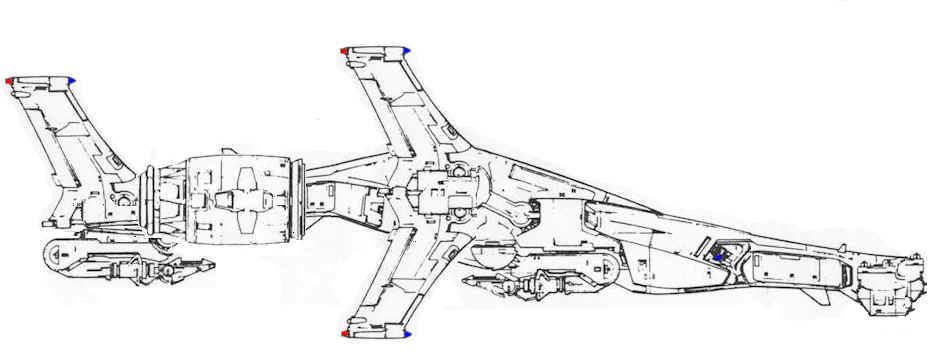___________________________________________________________
TECHNICAL DATA
AERIAL - MODEL A8 TYPE 770c SERIES 500- TERMINATOR SUPERSONIC TRANSPORT
____________________________________________________________

The Model A8 was the largest Aerial class unit produced by SKYNET and could carry up to forty T600 or T800 series Terminators at a time. The A8 was armored better than the A4, and had several rapid fatigue high energy weapon systems for use in pacifying a landing zone in a very short amount of time. One favorite tactic used by SKYNET was to fly at low altitudes over human concentrations at supersonic speeds, generating powerful shockwaves. Sometimes, the A8s would approach at supersonic speeds, then deploy their speed brakes just shy of the landing zone, letting their sonic boom pass them in flight and hit the landing zone just ahead of their touchdown. SKYNET learned how to demoralize the Resistance using its air superiority fairly early in the War.
Upon landing, two methods were used to either embark or disembark SKYNET units. A large cargo ramp could be hydraulically lowered from the rear of the modular cargo pod, exposing the almost cavernous interior where Endoskeletons were neatly stacked or two heavy doors mounted in the floor could be swung open and the Endoskeletons could either be lowered in powered racks or individually lowered by a pair of magnetic clamps attached to two polysteel cables with their own individual winches. In this manner, the A8 could rapidly release its carried cargo then become airborne again to return to base to ferry in more Endoskeletons or it could remain on station indefinitely, loitering and providing close air support. Several batteries of independently movable, ultra-powerful white and infra-red spectrum spotlights (mounted in armored housings along the airframe) would activate just before touchdown, flooding the immediate area in both the visible and IR spectrums, giving any emerging combat units full visual advantage as well as illuminating areas in infra-red energy that the low light and HRIR sensors of the Machines could fully utilize. An added benefit of this tactic was that it tended to blind humans in the landing zone, especially those who were operating night vision or low light enhancement visual aids.
Terminator units were stored in individual 'niches' within the cargo pod, in four rows of ten slots each, secured against any sudden maneuvers by a series of magnetic locks and interfaced with the system of the transport so that battlefield and tactical information could be accessed and uploaded on the fly. The entire cargo pod could also be jettisoned, landing on its own four integral landing claws (which extended from the sides of the pod) if required. One combat operational protocol called for the A8 to approach at low altitude, slow to a hover, drop the cargo pod, and then climb to a loiter orbit around the landing zone in order to provide close air support and to be protected by A5 and A4 units loitering on station. Once the cargo-pod had grounded and either landed successfully or slid to a halt, the Terminator units would deploy normally through several large security locks. Later, the Terminator units would return to the cargo pod, the A8 would descend in VTOL mode and pick up the cargo pod for the return trip back to its staging base. Some references to the sport of "bowling" exist among Resistance units in regard to this tactic.
Another variant of the A8 allowed for the carrying of heavy equipment and the cargo pod was set up for the transportation of larger HK units such as the tracked and walker models. This version could not transport bipedal combat units in a secure manner though it could carry them for short distances if the units used the integrated holds mounted in the pod.
The Resistance often referred to the A8 as the "Gar" due to its unique shape. Its massive length, almost seventy-five meters from nose to tip of tail, was another advantage it had in the psychological department.
SKYNET built many other models of
Endoskeleton and Terminator transports during the War, both ground and aerial
variations but the A8 was the largest that the supercomputer ever produced or
fielded. At least three A8s were reconfigured to super-gunships between
02:27:2027AD and 07:03:2028AD, their internal transport bays being modified to
hold a variety of look-down, rapid fatigue, autonomous weapon systems and
dedicated target acquisition / tracking electronics. One such modified A8
was lost during the Cheyenne offensive to coordinated ground fire from highly
trained and very specialized Resistance anti-air units while another was
captured still in its armored hanger. The third A8 super-gunship was
discovered three years after the battle of

A8 Terminator Transport with high capacity electric hyperfan engine in place
and rotated for sustained Mach Four plus supersonic flight.
__________________________________